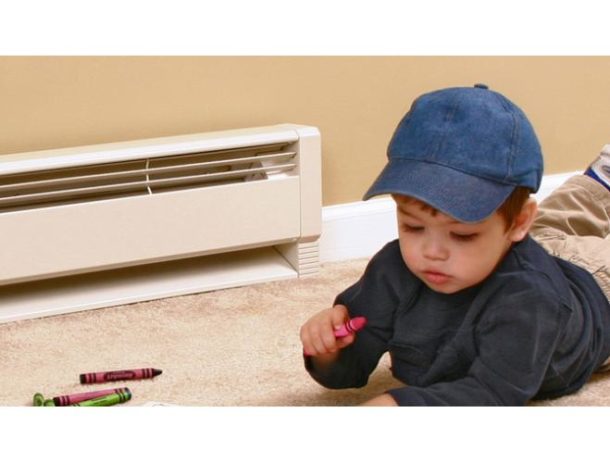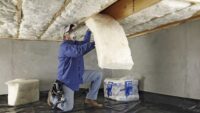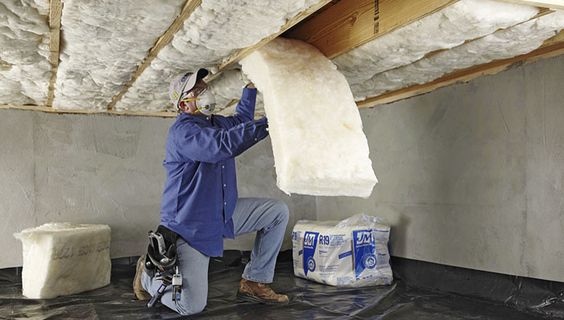As fall turns to winter, it becomes more important to have a cozy home to retreat to on cold days. However, it may become challenging to preserve a respectable home within one’s budget, given the rising cost of power. Thankfully, there are many options available to reduce heating costs. Here we’ll go through five tried-and-true Read more
home maintenance

As fall turns to winter, it becomes more important to have a cozy home to retreat to on cold days. However, it may become challenging to preserve a respectable home within one’s budget, given the rising cost of power. Thankfully, there are many options available to reduce heating costs. Here we’ll go through five tried-and-true methods for accomplishing this objective.

Invest in Proper Insulation
Investing in proper insulation is one of the best methods to save money on heating your home. Lack of proper insulation can cause heat to escape, increasing the workload of your heating system. The insulation in your home’s walls, ceiling, and floors should be checked first. Invest in better insulating materials if the current ones are inadequate or damaged. Additionally, ensure that all cracks and openings in windows and doors are sealed. The long-term savings on heating costs from this initial expenditure can be substantial.
Schedule Regular Maintenance
Keeping up with routine maintenance on your heating system is essential to keeping it running smoothly and efficiently. System efficiency decreases with neglect, which in turn increases energy consumption and costs. Get a professional to tune up your furnace to keep it in tip-top shape. They are able to check and clean parts, change filters, and find any problems. Preventing malfunctions and maximizing efficiency can save you a lot of money throughout the life of your system if you maintain it regularly.
Upgrade to Energy-Efficient Heating Systems
An upgrade could be in order if your current heating system is somewhat old. The energy costs associated with heating your home can be greatly reduced by installing a state-of-the-art heating system. You should think about upgrading to a modern, more energy-efficient heating system. Heat pumps and radiant heating are two alternative heating methods worth looking into because of their low energy use. Despite a greater purchase price, this option will prove to be cost-effective over time.
Implement a Programmable Thermostat
You may have greater precision over the temperature in your home by using a programmable thermostat. When you’re not there or asleep, you may set the thermostat to a cooler setting, and when you need it, you can turn it up. When the weather is mild, it’s unnecessary to have the heat on, therefore this helps save electricity. Smart thermostats can optimize energy use by learning your habits and adjusting themselves accordingly. By turning down the heat when it’s not needed, the savings from using a programmable thermostat can be substantial.
Practice Energy-Efficient Habits
A significant reduction in your heating costs may also result from simple lifestyle adjustments. Keeping doors and windows closed when the heat is on, using curtains or blinds to trap heat, and dressing in layers to be warm indoors are all easy ways to reduce your heating needs. Leave the oven door open after you’re done cooking to allow the leftover heat to warm the room. You can save a lot of money in the long run by making these minor adjustments.
Endnote
It is not only conceivable, but also practical, to reduce the cost of heating your home. You can keep your house toasty and warm without breaking the bank if you put money into good insulation, upgrade to energy-efficient heating systems, use a programmable thermostat, adopt energy-efficient practices, and schedule routine maintenance. Your heating costs will go down and your home will be more eco-friendly and sustainable as a result of taking these measures.

Crawl spaces are often overlooked when cleaning and maintaining our homes. We focus on keeping the visible areas of our homes clean, but the crawl space is just as important. Failing to keep the crawl space clean can lead to serious problems, such as mold and water damage. Taking care of your crawl space will Read more
Crawl spaces are often overlooked when cleaning and maintaining our homes. We focus on keeping the visible areas of our homes clean, but the crawl space is just as important. Failing to keep the crawl space clean can lead to serious problems, such as mold and water damage. Taking care of your crawl space will not only protect your belongings and home, but it can also save you money in the long run.

Preventing Crawl Space Damage
Crawl spaces are often ignored when it comes to home maintenance, but keeping this area of your home in good condition is important for preventing damage from pests. Termites and other pests can enter your home through the crawl space, and they can do a lot of damage once they’re in. Insulating your crawl space is one way to help prevent these pests from getting in and causing damage.
So make sure you have a crawl space dehumidifier installed in yours. They will keep your home smelling fresh by removing moisture and other odors, and they’ll help to prevent mold and mildew. If you see any signs of mold or water damage, don’t wait to fix them. Just call the crawl space insulation company, and they will get that out to your home quickly.
Crawl Space Insulation Types: How To Choose?
There are a variety of different crawl space insulation types available. Understanding the different types available and how they work will help you to make an informed decision when it comes time to purchase. There are three main crawl space insulation types:
Open-cell insulation is often used in the walls, floors, and ceilings of homes. This type of insulation is typically less expensive than other types of insulation. Open-cell crawl space insulation works by trapping air within tiny pockets between its fibers. The air trapped in these pockets acts as a buffer, slowing the transfer of heat from the warm side to the cool side. The insulation’s open-cell design is ideal for use in crawl spaces because it allows the moisture that collects on the cool side of the insulation to evaporate into the atmosphere.
Closed-cell insulation is often placed under the subfloor of a home. This type of insulation is typically more expensive than other types because it is made from more material. Closed-cell crawl space insulation works by trapping air within tiny pockets between two pieces of plastic. The type of insulation used in a crawl space depends on the climate.
In warmer climates, fiberglass insulation is typically used because it is inexpensive and easy to install. In colder climates, closed-cell insulation is often preferred because it does not trap moisture as readily as open-cell insulation.
Reflective insulation is an effective way to prevent crawl space damage from termites and other pests. It is a material that reflects heat back into the crawl space, keeping the area cooler and preventing damage to the structure. Reflective insulation is available in a variety of sizes and thicknesses and can be installed by a professional or do-it-yourselfer.
Conclusion
Preventing crawl space damage is essential to protecting your home from these costly repairs. Some simple steps you can take to prevent damage include: sealing any cracks or openings in your foundation, keeping the area well-ventilated, and using termite-resistant materials when building or repairing your home.
By taking these preventive measures, you can keep your crawl space free of damage and help ensure your home’s long-term stability.
